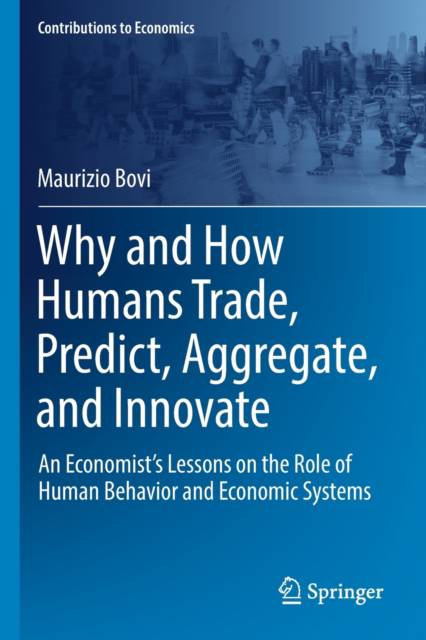
- Afhalen na 1 uur in een winkel met voorraad
- Gratis thuislevering in België vanaf € 30
- Ruim aanbod met 7 miljoen producten
- Afhalen na 1 uur in een winkel met voorraad
- Gratis thuislevering in België vanaf € 30
- Ruim aanbod met 7 miljoen producten
Why and How Humans Trade, Predict, Aggregate, and Innovate
An Economist's Lessons on the Role of Human Behavior and Economic Systems
Maurizio BoviOmschrijving
Trading, forecasting, aggregating, and innovating (the Four) are key social interactions in human life at both the individual and aggregate levels. They are part of the human fabric because they stem from mankind's peculiarities--heterogeneity, inclination to forecast, sociality, and inventiveness. But humans have multifaceted behavior, too. They are capable of having contradictory impulses towards one another, integrating and disintegrating as well as cooperating and dominating, and behaving prosocially and anti-socially. Hence, humans need to organize themselves in order to maintain, improve, and extend their social interactions as well as a safe and ordered life. Crucial intersections emerge naturally--the efficiency of humans' way of tackling the Four is a joint product of economic systems, institutions, and behaviors.
All told, the main idea of this book is to include in a single tour a collection of insights on why and how humans implement the Four. The narrative highlights several connections as well as how key these businesses are as the traveler is escorted through some Four-related behavioral problems and institutional solutions that humans have been, respectively, facing and elaborating over time. Economics students may exploit this book by both inserting what they are learning from textbooks into a wider framework and enjoying some of the hints revealed by the grand social theorizing of giants such as A. Smith and J. Schumpeter. But the proposed tour may also attract outsiders to economics who are curious about disparate economic themes linked to the Four but who wish to gain an overview without engaging in longer readings.
Specificaties
Betrokkenen
- Auteur(s):
- Uitgeverij:
Inhoud
- Aantal bladzijden:
- 191
- Taal:
- Engels
- Reeks:
Eigenschappen
- Productcode (EAN):
- 9783030938871
- Verschijningsdatum:
- 30/03/2023
- Uitvoering:
- Paperback
- Formaat:
- Trade paperback (VS)
- Afmetingen:
- 156 mm x 234 mm
- Gewicht:
- 285 g

Alleen bij Standaard Boekhandel
Beoordelingen
We publiceren alleen reviews die voldoen aan de voorwaarden voor reviews. Bekijk onze voorwaarden voor reviews.











